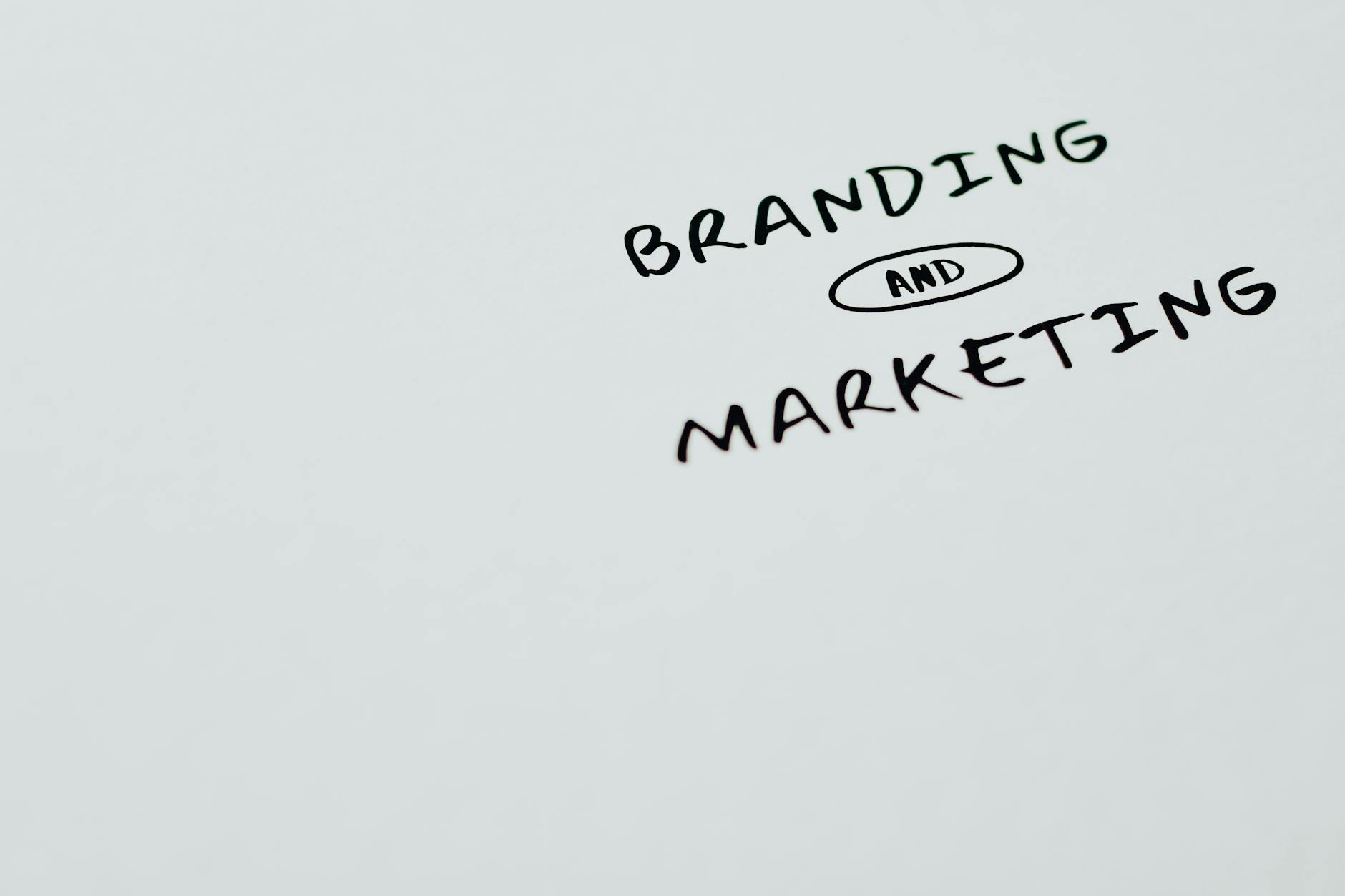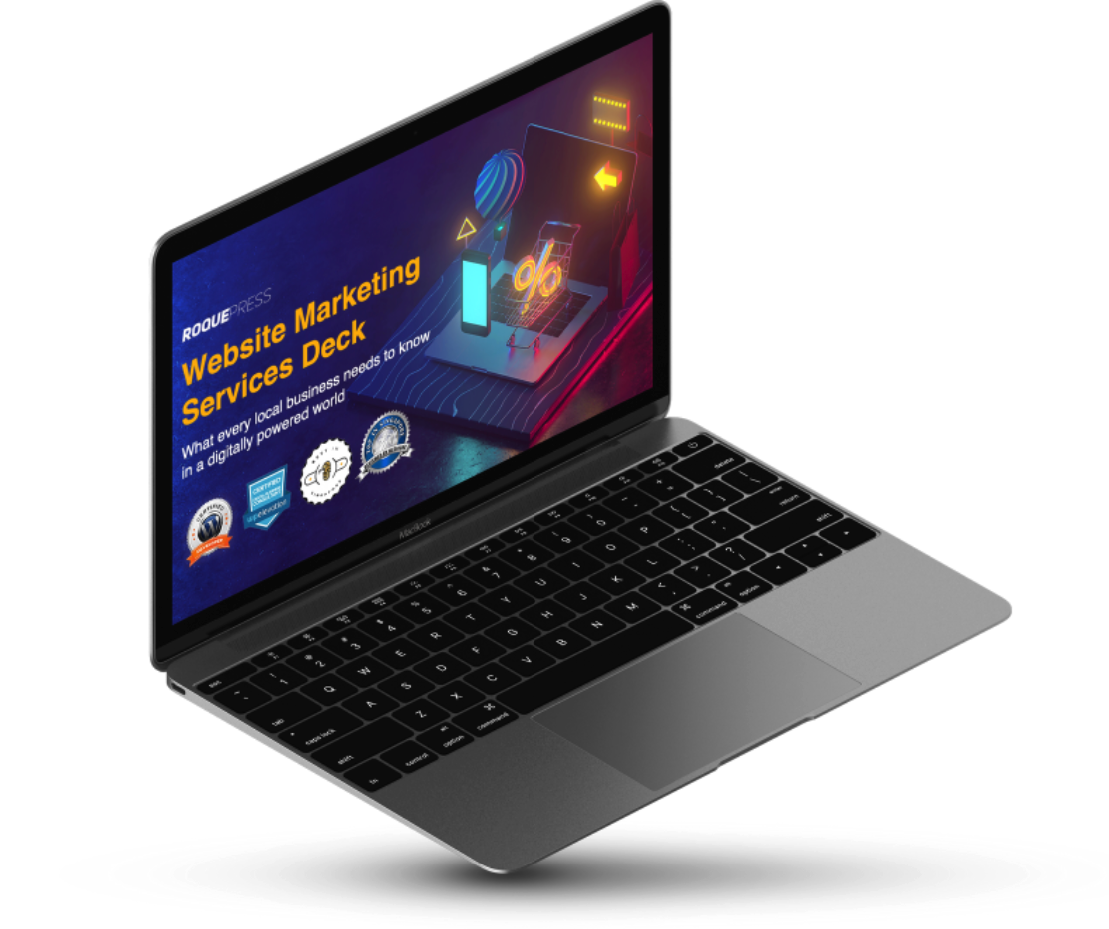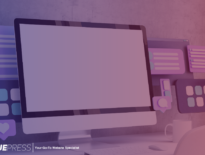Web design prices can be a real head-scratcher. Are you forking out too many quid or barely parting with pennies? This blog post will dive deep into the great web design price debate.
Let’s cut to the chase. There’s no clear-cut answer to how much you should be paying for web design. It’s a bit like asking how long a piece of string is. But don’t worry, you’ll find some helpful pointers here to steer you in the right direction.
Get ready to unravel the mystery of web design prices. By the end of this post, you’ll know whether you’re paying a fair price, or if it’s time to tighten those purse strings or splash out a little more. So, buckle up and let’s get cracking! The Great Web Design Price Debate: Are You Paying Too Much or Too Little?
The Importance of a Well-Designed Website
Hey there! Welcome to my awesome blog post about the importance of having a well-designed website. Get ready to discover why your website design matters, how it impacts user experience, and its influence on brand perception. Let’s dive right in!
Why Your Website Design Matters

Imagine strolling down a bustling street filled with shops. Which store would catch your attention first? The one with a plain and uninviting exterior or the one with a vibrant and captivating storefront? I bet it’s the latter! The same goes for websites. Your site’s design is like its storefront, grabbing visitors’ attention and enticing them to explore further.
A well-designed website helps you stand out from the competition and leaves a lasting impression on your audience. It showcases your professionalism, credibility, and attention to detail. So, ask yourself, why settle for a mediocre design when you can have a stunning one that makes people go “Wow!”?
The Impact of Web Design on User Experience
Think about the last time you visited a website that was slow to load, cluttered with confusing navigation, or had text that was impossible to read. Frustrating, right? Well, that’s the power of poor web design on user experience.

A well-designed website ensures a seamless and enjoyable user experience. It organizes information in a logical and intuitive manner, making it easy for visitors to find what they’re looking for. With a user-friendly interface and responsive design, your website becomes accessible across different devices, enhancing user satisfaction.
Remember, a happy user is more likely to stay longer on your site, engage with your content, and ultimately convert into a customer. So, let your web design be the superhero that saves visitors from the clutches of frustration!
How Design Influences Brand Perception

Your website design speaks volumes about your brand. It’s like a visual representation of your business’s personality. A beautifully crafted design showcases professionalism, trustworthiness, and attention to detail. On the flip side, a poorly designed website can send the wrong message, causing potential customers to doubt your credibility.
Investing in a well-designed website not only helps you make a positive first impression but also reinforces your brand identity. It allows you to align your design elements with your brand’s unique style, colors, and tone of voice. By creating a cohesive visual experience, you’ll establish a stronger brand presence and leave a memorable impression on your audience.
So, ask yourself, what do you want your website design to say about your brand? Let it be the ultimate brand ambassador that wows and captivates!
The Great Web Design Price Debate: Are You Paying Too Much or Too Little?
Understanding Web Design Pricing
When it comes to creating a website, one of the most important decisions you’ll make is choosing a web design pricing model. Understanding the different factors that affect web design prices and the various pricing models in the industry can help you make an informed choice. In this section, we’ll explore the pros and cons of fixed pricing, hourly pricing, and value-based pricing to help you determine which option works best for you.
Factors that Affect Web Design Prices
Before diving into the different pricing models, it’s essential to understand the factors that influence web design prices. Several key elements can impact the overall cost of a web design project:
- The complexity of the website: Websites with intricate designs or advanced functionalities may require more time and expertise, resulting in higher prices.
- The number of web pages: The more pages you need, the more time and effort it takes to create them, which can affect the final price.
- The level of customization: Highly customized websites often require extensive coding and design work, which can increase the price.
- The need for additional services: If you require extra services like copywriting, SEO optimization, or e-commerce integration, it can impact the overall cost.
Keep these factors in mind as we explore the different pricing models in the web design industry.
Different Pricing Models in the Web Design Industry
Web design pricing can be categorized into three main models: fixed pricing, hourly pricing, and value-based pricing. Each model has its own advantages and disadvantages, so let’s take a closer look at each one:
The Pros and Cons of Fixed Pricing
Fixed pricing is a popular web design pricing model where a set price is determined for the entire project. Here are the pros and cons:
- Pros:
- Clear expectations: With a fixed price, you know exactly how much you’ll be paying upfront.
- No pressure on time: Since the price is fixed, you don’t have to worry about hourly rates or project delays.
- Simple budgeting: Fixed pricing allows for easier budgeting as you have a clear understanding of the total cost.
- Cons:
- Potential for overpaying: If the project ends up requiring less time and effort than anticipated, you may end up paying more than necessary.
- Scope creep: If additional features or changes are requested during the project, it can lead to extra charges.
The Pros and Cons of Hourly Pricing
Hourly pricing is another common pricing model in web design, where the client is billed based on the number of hours spent on the project. Here are the pros and cons:
- Pros:
- Flexibility: Hourly pricing allows for greater flexibility, as you can make changes and additions to the project without worrying about extra charges.
- Accurate billing: You only pay for the actual time spent on the project, ensuring fairness in pricing.
- Cons:
- Uncertain budgeting: Since the final cost depends on the number of hours worked, it’s harder to estimate the total project cost upfront.
- Potential for cost overruns: If the project takes longer than anticipated, the final bill can exceed your initial expectations.
The Pros and Cons of Value-Based Pricing
Value-based pricing is a less common but increasingly popular pricing model in web design. This approach focuses on the value that the website brings to the client’s business. Here are the pros and cons:
- Pros:
- Alignment with business goals: Value-based pricing ensures that the website’s impact on your business is reflected in the price.
- Potential for higher ROI: When the price is based on the value the website delivers, there’s a higher chance of achieving a positive return on investment.
- Cons:
- Subjectivity: Determining the value of a website can be subjective and may require open communication and negotiation.
- Complex pricing discussions: Value-based pricing often involves more in-depth discussions and analysis to arrive at a fair price.
Now that you have a better understanding of the different pricing models and their pros and cons, you can choose the one that best suits your needs and budget. Remember to consider the specific requirements of your web design project and discuss your options with potential web design agencies or freelancers. The Great Web Design Price Debate: Are You Paying Too Much or Too Little?
Are You Paying Too Much for Web Design?
Hey there, fellow website owner! Today, we’re diving headfirst into the great debate about web design prices. Are you feeling unsure if you’re paying too much for your website? Well, worry no more! In this section, we’ll discuss some signs that might indicate you’re overpaying, the dangers of choosing cheap design services, and how to determine the right price for your website.
Signs that You Might Be Overpaying

It’s important to ensure that you’re getting your money’s worth when investing in web design. Here are a few signs that you might be overpaying:
- Exorbitant upfront costs: If you’re being charged an arm and a leg just to get started, it’s time to question the fairness of the price.
- Unnecessary features: Are you paying for fancy bells and whistles that you don’t actually need? Be cautious of unnecessary add-ons that can significantly drive up the cost.
- Slow turnaround time: If the web design agency is taking forever to complete your project, despite charging a premium price, it may be a sign that they’re taking advantage of your budget.
The Dangers of Choosing Cheap Design Services

While it may be tempting to go for the lowest-priced option, there are dangers lurking behind cheap design services:
- Poor quality: Often, cheap services mean cutting corners, leading to subpar design, functionality, and user experience.
- Limited customization: Cheap design services may offer limited options for customization, making it harder to create a unique and impactful website.
- Lack of support: When you encounter issues or need updates, cheap service providers may not be readily available or provide adequate customer support.
How to Determine the Right Price for Your Website
When it comes to determining the right price for your website, consider the following factors:
- Your business goals: Think about what you want your website to achieve and the level of complexity required to accomplish those goals.
- Scope of work: Consider the number of pages, features, and functionalities you need. More complex websites may require a higher investment.
- Experience and expertise: A web design agency with a proven track record and expertise in your industry might command a higher price.
- Budget: Set a realistic budget that aligns with your business’s financial capabilities. Remember that quality web design is an investment.

Remember, finding the right balance between price and quality is crucial for your website’s success. Don’t rush into a decision based solely on cost, and always do your research before committing to a web design service. By keeping these signs, dangers, and considerations in mind, you’ll be well-equipped to make an informed decision and get the best value for your money.
The Hidden Costs of Web Design
When it comes to web design, the price you pay upfront is just the tip of the iceberg. There are several hidden costs that many people overlook, which can end up impacting your budget and the overall success of your website. In this section, we will explore the different aspects of web design that can incur additional expenses, and why investing in quality design is crucial.
Beyond the Initial Design

Building a website involves more than just the initial design. Once the design is finalized, there are numerous development tasks that need to be completed. This can include coding, content creation, and integrating various features. These additional steps require time and expertise, which may come at an extra cost. So, it’s important to factor in these ongoing expenses when budgeting for your web design project.
Additional Expenses to Consider

Website maintenance is an essential part of keeping your online presence up-to-date and secure. Regular updates, security patches, and technical support are necessary to ensure your website functions optimally. These ongoing expenses can add up over time, especially if you choose to outsource these tasks to a professional. It’s crucial to consider these hidden costs and include them in your overall budget.

In today’s mobile-driven world, having a website that is mobile-friendly and responsive is crucial. Ensuring your website adapts to different screen sizes and devices is not only important for user experience but also for search engine optimization. However, implementing a responsive design can entail additional costs, as it requires extra development work and testing. Therefore, it’s vital to account for this when planning your web design budget.
The Value of Investing in Quality Design

Investing in quality web design is an investment in your brand’s image and user experience. A well-designed website not only attracts visitors but also keeps them engaged and encourages them to take desired actions. A visually appealing and user-friendly interface builds trust and credibility, leading to higher conversion rates and customer satisfaction. Remember, your website is often the first impression potential customers have of your business, so it’s essential to make it count.

Search engine optimization (SEO) plays a crucial role in driving organic traffic to your website. A properly optimized website is more likely to rank higher in search engine results, bringing in valuable organic leads. Implementing SEO best practices, such as optimizing page speed, meta tags, and keyword usage, requires careful planning and execution. While this may incur additional costs, the long-term benefits of a well-optimized website far outweigh the initial investment.

As your business grows, your website should also be able to accommodate the increasing demands and changes. Investing in a scalable web design ensures that your website can easily adapt to future needs, such as adding new features or expanding your product/service offerings. While scalability may require additional upfront costs, it saves you from having to overhaul your entire website down the line, resulting in long-term cost savings and improved efficiency.
By considering these hidden costs and the value of investing in quality web design, you can make informed decisions that align with your budget and business goals. Remember, a successful website goes beyond aesthetics – it encompasses functionality, user experience, and long-term sustainability. So, don’t just settle for the cheapest option, but rather invest wisely to achieve a website that truly stands out.
Finding the Right Balance
When it comes to web design, finding the right balance between cost and quality can be a challenging task. As a savvy business owner, you want to get the best value for your money without compromising on the quality of your website. In this blog post section, I will discuss the risks of sacrificing quality for cost, provide tips on finding affordable web design services, and offer advice on negotiating a fair price.
The Risks of Sacrificing Quality for Cost

While it may be tempting to opt for the cheapest web design services available, it is important to consider the risks involved. Choosing a low-cost provider who cuts corners to deliver a quick and cheap website can lead to disastrous consequences. Poorly designed websites can negatively impact user experience, which in turn affects your brand reputation and conversion rates. Remember, your website is often the first impression potential customers have of your business, so it’s crucial to make it a positive one.
How to Find Affordable Web Design Services

Fortunately, there are ways to find affordable web design services without compromising quality. Here are a few tips to help you in your search:
- Seek recommendations from trusted sources: Ask colleagues, friends, or business networks for referrals to reliable and affordable web designers.
- Compare quotes: Get multiple quotes from different web design agencies or freelancers to ensure you have a clear understanding of the market rate.
- Review portfolios: Examine the previous work of potential web designers to gauge their skill level and suitability for your project.
- Consider experience: Look for web designers who have experience working with businesses similar to yours. They will have a better understanding of your industry and target audience.
- Check for testimonials: Read reviews and testimonials from past clients to gauge the satisfaction levels and quality of work delivered by the web designer.
Tips for Negotiating a Fair Price
When it comes to negotiating a fair price for web design services, keep these tips in mind:
- Clearly define your requirements: Provide a detailed brief to the web designer, outlining your goals, specific features, and functionality you require.
- Ask for a breakdown of costs: Request a breakdown of the pricing structure, including any additional charges for ongoing maintenance, updates, or support.
- Consider long-term value: While the upfront cost is important, also consider the long-term value of the website. A well-designed site that meets your business goals can generate significant returns on investment.
- Don’t be afraid to negotiate: Remember, the initial price proposed by the web designer is often negotiable. If you feel the quote is too high, discuss your budget and explore options for cost-saving without compromising quality.
- Get a written agreement: Once you’ve agreed on a price, ensure you have a written contract that clearly outlines the scope of work, timelines, payment terms, and any guarantees.
Conclusion
In conclusion, when it comes to the great web design price debate, it’s important to strike the right balance. While you don’t want to overpay and break the bank, you also don’t want to skimp and end up with a subpar website. Finding that sweet spot where quality meets affordability is the key.
Remember, a well-designed website is an investment in your online presence and can greatly impact your business. It’s crucial to consider the long-term benefits and potential return on investment rather than solely focusing on the immediate cost.
To ensure you’re getting the best value for your money, do thorough research, compare prices, and ask for quotes from different web design agencies. Don’t hesitate to discuss your specific needs and expectations with potential designers to get a clear understanding of what they offer and how they can meet your requirements.
Ultimately, the goal is to find a web design package that aligns with your budget and delivers a professional, user-friendly, and visually appealing website. So, take your time, weigh your options, and make an informed decision.
By following these guidelines, you can save yourself from the headache of paying too much or too little for your web design project. Remember, high-quality work deserves fair compensation, so invest wisely and watch your online presence thrive!



